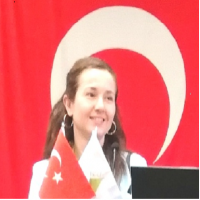Research Article
Aim & Scope
Current Perspectives on Medicinal and Aromatic Plants (CUPMAP) is an open access, double-blinded peer-reviewed and refereed international journal published by MESMAP scientific group. The main objective of the CUPMAP is to provide an intellectual outlook on the scientific researches on Medicinal and Aromatic Plants. CUPMAP have distinguished goals to promote interdisciplinary scientific studies in which results could easily be used in industrial production on MAPs.
CUPMAP Journal publishes Biannually (June and December).
The publication language of the journal is English.
Journal of CUPMAP welcomes article submissions and does not charge any article submission or processing charges.
The authors should ensure that they have written entirely original works, and if the authors have used the work and/or words of others that this has been appropriately cited or quoted.
All submissions are screened by iThenticate similarity detection software and our maximum allowed score is 24% for the document in which the References section truncated.
This international scientific journal publishes high-quality research articles related to Medicinal and Aromatic Plants in the fields of science and technology such as Biology, Molecular Biology and Genetics, Chemistry, Agriculture, Biochemistry, Botany, Ethnobotany, Environmental Science, Forestry, Horticulture, Health Care & Public Health, Nutrition and Food Science, Pharmaceutical Sciences, and so on.
Current Perspectives on Medicinal and Aromatic Plants (CUPMAP) areas of interest include;
· Agricultural Practices of MAPs & NWFPs
· Aromatherapy & Phytoteraphy & Phytochemistry
· Biodiversity
· Biology & Biochemistry & Biotechnology
· Botany & Ethnobotany & Ethnopharmacology
· Conservation, Management and Sustainable Uses of MAPs & NWFPs
· Essential Oils & Secondary Plant Metabolites
· Herbal & Traditional Medicines
· Industrial Processing Technologies of MAPs
· Legislations on MAPs & NWFPs
· Literature on MAPS
· Marketing of MAPs and Products
· Molecular Cancer Therapeutics
· Molecular Modeling and Simulations
· Natural Cosmetics
· Non-Governmental & Non-Profit Organizations (NGO & NPO) on MAPs
· Pharmacognosy & Phytopharmacology & Toxicology
· Standardization and Quality of MAP Products
· Traditional & Modern Herbal Products
Author Guidelines
Instructions for Authors
Current Perspectives on Medicinal and Aromatic Plants (CUPMAP)
v Please read all of the following manuscript preparation instructions carefully. You can download Manuscript Template here.
v Manuscript should be written in English.
v Maximum length for articles is 15 pages. Articles over 15 pages in length can only be considered on an exceptional basis.
v Manuscripts can only be submitted through the CUPMAP online manuscript submission and evaluation system https://dergipark.org.tr/tr/pub/cupmap
v The journal management requires that all authors register to ORCID at http://orcid.org/register and get a free ORCID ID.
v All submissions are screened by iThenticate similarity detection software and our maximum allowed score is 24% for the document in which the References section truncated.
Manuscript Types
Original Articles: This is the most important type of article since it provides new information based on original research. The manuscript should include an abstract with the following subheadings: “Introduction”, “Materials and Methods”, “Results and Discussion”, and “Conclusion”.
Short Communications: Short communication is for a concise to present scientific reports related to scope of the journal. Short communication is not intended to publish preliminary results, but if these results are of exceptional interest and are particularly topical and relevant will be considered for publication. It should include an abstract with the following subheadings: “Introduction”, “Materials and Methods”, “Results and Discussion”, and “Conclusion”.
Review Articles: Reviews prepared by authors who have extensive knowledge on a particular field and whose scientific background has been translated into a high volume of publications with a high citation potential are welcomed.
CUPMAP STRUCTURE OF THE MANUSCRIPT
Font
Word document, Cambria, 12 point, single line space.
Page margins are 2.5 for all sides.
Length
Maximum length for articles is 15 pages.
Articles over 15 pages in length can only be considered on an exceptional basis.
Title
A concise title of the paper, avoid Abbreviations and formulae where possible.
· Use bold 14-point Cambria font. Use title uppercase, and make title in centered.
· Name(s) and SURNAME(s) of author(s) [Use centered, bold 12-point Cambria font, Use uppercase for surnames.]
· Affiliation(s) of author(s) [Use 10-point Cambria font.]
· E-mail address of the corresponding author [Use 10-point Cambria font.]
· ORCID(s) of author(s) [Use 10-point Cambria font.]
Abstract
Each article is to be preceded by a succinct abstract, of up to 300 words, that highlights the objectives, methods, results, and conclusions of the paper. The abstract should state briefly the purpose of the research, the principal results and major conclusions.
The abstract body is typed in Cambria, 10 pt.
Key Words
Provide a maximum of 6 (six) key words or phrases in order of importance, separated by commas and typed in Cambria, 10 pt.
Headings
Use bold, uppercase, 12 Cambria font for headings.
Introduction
This should define the problem and, if possible, the frame of existing knowledge. Please ensure that people not working in that particular field will be able to understand the intention. The word length of the introduction should be 150 to 300 words.
Materials and Methods
Materials and methods should be clearly presented to allow the reproduction of the experiments.
Results and Discussion
A combined Results and Discussion section is often appropriate. Results should be clear and concise and give the significance of the results of the work. Data must not be repeated in figures and tables. Implications for further studies or application may be discussed.
Conclusion
A short Conclusions section should be added if results and discussion are combined.
Tables and Figures
· Tables should have a short descriptive title.
· The unit of measurement used in a table should be stated.
· Tables should be numbered consecutively.
· Figures should be prepared in GIF, TIFF, JPEG or PowerPoint.
· Tables and Figures should be appropriately cited in the manuscript.
Acknowledgements
Acknowledgements of financial support, advice or other kind of assistance should be given at the end of the text under the heading "Acknowledgements". The names of funding organizations should be written in full.
Conflict of Interest
All authors must disclose any financial and personal relationships with other people or organizations that could inappropriately influence (bias) their work. Examples of potential conflicts of interest include employment, consultancies, stock ownership, honoraria, paid expert testimony, patent applications/registrations, and grants or other funding.
References
They should be grouped at the end of the paper in surname order of appearance. Abbreviated titles of periodicals are to be used according to Chemical or Biological Abstracts, but names of lesser-known journals should be typed in full.
References should be styled and punctuated according to the following examples:
Original Papers
Surname, N.N., and Surname, N.N., Year. The full title of the article. Journal Full Name, volume (issue), first and last page. DOI number
Book or Proceeding
Surname, N.N., and Surname, N.N., Year. Title of the contribution. In: Title of the book or proceeding. Volume (Publisher, City), pp. first and last page
Thesis
Surname, N.N., Year. Title of the thesis, University and Faculty, City. pages.
Ethical Principles and Publication Policy
Publishers Ethic Rules: “Current Perspectives on Medicinal and Aromatic Plants (CUPMAP)” is an international journal, which publishes at the highest scientific level on original research articles dealing with Medicinal and Aromatic Plants in the fields of science and technology such as Biology, Molecular Biology and Genetics, Chemistry, Agriculture, Biochemistry, Botany, Ethnobotany, Environmental Science, Forestry, Horticulture, Health Care & Public Health, Nutrition and Food Science, Pharmaceutical Sciences, and so on. Originality, high scientific quality, and citation potential are the most important criteria for a manuscript to be accepted for publication. Manuscripts submitted for evaluation should not have been previously presented or already published in an electronic or printed medium. The journal should be informed of manuscripts that have been submitted to another journal for evaluation and rejected for publication. The submission of previous reviewer reports will expedite the evaluation process. Manuscripts that have been presented in a meeting should be submitted with detailed information on the organization, including the name, date, and location of the organization. All authors submitting their works to “Current Perspectives on Medicinal and Aromatic Plants (CUPMAP)” for publication as original articles attest that the submitted works represent their authors’ contributions and have not been copied or plagiarized in whole or in part from other works. It is necessary to agree upon standards of expected ethical behavior for all parties involved in the act of publishing: the author, the journal editor, the peer reviewer and the publisher. “Current Perspectives on Medicinal and Aromatic Plants (CUPMAP)” ethic statements are based on COPE’s Best Practice Guidelines for Journal Editors.
Ethic Committee Report: The studies have to be prepared according to scientific rules and ethics. The results of any research (especially biology, veterinary, aquaculture and zootechnics) to be published as a manuscript need to have the report of a committee of ethic and that report’s copy should be attached with the manuscript itself. Inclusion of the approval letter from the relevant Ethics Committee or Institution's Review Board regarding the research protocol and the rights of the subjects. The author or all the authors whose studies are to be published in the journal will own all kind of liabilities in terms of their manuscripts.
Publication Decisions: The editor is responsible for deciding which of the articles submitted to the “Current Perspectives on Medicinal and Aromatic Plants (CUPMAP)” should be published. The editor may be guided by the policies of the CUPMAP's editorial board and constrained by such legal requirements as shall then be in force regarding libel, copyright infringement and plagiarism. The editor may confer with other editors or reviewers in making this decision.
Fair Play: An editor at any time evaluate manuscripts for their intellectual content without regard to race, gender, sexual orientation, religious belief, ethnic origin, citizenship, or political philosophy of the authors.
Confidentiality: The editor and any editorial staff must not disclose any information about a submitted manuscript to anyone other than the corresponding author, reviewers, potential reviewers, other editorial advisers, and the publisher, as appropriate.
Disclosure and Conflicts of Interest: Unpublished materials disclosed in a submitted manuscript must not be used in an editor's own research without the express written consent of the author.
Duties of Reviewers
Contribution to Editorial Decisions: Peer review assists the editor in making editorial decisions and through the editorial communications with the author may also assist the author in improving the paper.
Promptness: Any selected referee who feels unqualified to review the research reported in a manuscript or knows that its prompt review will be impossible should notify the editor and excuse himself from the review process.
Confidentiality: Any manuscripts received for review must be treated as confidential documents. They must not be shown to or discussed with others except as authorized by the editor.
Standards of Objectivity: Reviews should be conducted objectively. Personal criticism of the author is inappropriate. Referees should express their views clearly with supporting arguments.
Acknowledgement of Sources: Reviewers should identify relevant published work that has not been cited by the authors. Any statement that an observation, derivation, or argument had been previously reported should be accompanied by the relevant citation. A reviewer should also call to the editor's attention any substantial similarity or overlap between the manuscript under consideration and any other published paper of which they have personal knowledge.
Disclosure and Conflict of Interest: Privileged information or ideas obtained through peer review must be kept confidential and not used for personal advantage. Reviewers should not consider manuscripts in which they have conflicts of interest resulting from competitive, collaborative, or other relationships or connections with any of the authors, companies, or institutions connected to the papers.
Duties of Authors
Reporting Standards: Authors of reports of original research should present an accurate account of the work performed as well as an objective discussion of its significance. Underlying data should be represented accurately in the paper. A paper should contain sufficient detail and references to permit others to replicate the work. Fraudulent or knowingly inaccurate statements constitute unethical behavior and are unacceptable.
Data Access and Retention: Authors are asked to provide the raw data in connection with a paper for editorial review, and should be prepared to provide public access to such data (consistent with the ALPSP-STM Statement on Data and Databases), if practicable, and should in any event be prepared to retain such data for a reasonable time after publication.
Originality and Plagiarism: The authors should ensure that they have written entirely original works, and if the authors have used the work and/or words of others that this has been appropriately cited or quoted.
All submissions are screened by a similarity detection software.
We are using iThenticate plagiarism solution and our maximum allowed score, for the document in which the Materials and Methods and References sections truncated, is 24%. Higher scores are not allowed and the author will be given the plagiarism report and the manuscript will be returned to the authors.
Multiple, Redundant or Concurrent Publication: An author should not in general publish manuscripts describing essentially the same research in more than one journal or primary publication. Submitting the same manuscript to more than one journal concurrently constitutes unethical publishing behavior and is unacceptable.
Acknowledgement of Sources: Proper acknowledgment of the work of others must always be given. Authors should cite publications that have been influential in determining the nature of the reported work.
Authorship of the Paper: Authorship should be limited to those who have made a significant contribution to the conception, design, execution, or interpretation of the reported study. All those who have made significant contributions should be listed as co-authors. Where there are others who have participated in certain substantive aspects of the research project, they should be acknowledged or listed as contributors. The corresponding author should ensure that all appropriate co-authors and no inappropriate co-authors are included on the paper, and that all co-authors have seen and approved the final version of the paper and have agreed to its submission for publication.
Hazards and Human or Animal Subjects: If the work involves chemicals, procedures or equipment that have any unusual hazards inherent in their use, the author must clearly identify these in the manuscript.
Disclosure and Conflicts of Interest: All authors should disclose in their manuscript any financial or other substantive conflict of interest that might be construed to influence the results or interpretation of their manuscript. All sources of financial support for the project should be disclosed.
Fundamental Errors in Published Works: When an author discovers a significant error or inaccuracy in his/her own published work, it is the author’s obligation to promptly notify the journal editor or publisher and cooperate with the editor to retract or correct the paper.
Price Policy
Journal of JAEFS welcomes article submissions and does not charge any article submission or processing charges. (Dergiye gönderilen makalelerden değerlendirme öncesinde, sonrasında ve basım aşamasında herhangi bir ücret talep edilmemektedir. CUPMAP dergisi ücretsiz bir dergidir.)
Indexes
Citation Indexes
Other Indexes
Journal Boards
Editor-in-Chief

Born 02 October 1972 in Kilis, Turkiye, he holds an MSc (1997) and PhD (2003) in Agricultural Engineering on Medicinal and Aromatic Plants. He is the author or co-author more than one hundred peer-reviewed scientific articles, book chapters and conference presentations as an invited speaker. Until now, he visited about one hundreds (100) different countries all over the world for scientific purposes and has good relationships with them.
• H-index: 22 / i10-index: 39 / Citations: 1867
- President of Spices Scientific Board at Turkish Ministry of Agriculture and Forestry
- President of Coffee Scientific Board at Turkish Ministry of Agriculture and Forestry
- Turkish Ministry Representative of the Codex Alimentarius Commission
- President of International Mediterranean Symposium on Medicinal and Aromatic Plants (MESMAP)
- Chief Editor of Current Perspectives on Medicinal and Aromatic Plants (CUPMAP)
- Manager of the Gaziantep University Ulug Bey High Technology Application and Research Center (ULUTEM)
- Manager of the Gaziantep University Phytotherapy and Medicinal Aromatic Plants Application and Research Center (FITOTABAUM)
- Founder of the NS HERBALS Coffee & Spices Co.
Interests:
Ethnobotany and ethnopharmacology of Turkish Medicinal and Aromatic Plants
Good collection and agricultural practices of MAPs
Domestication of economically important MAPs
In situ and ex situ cultivation of MAPs
Field cultivation and processing of medicinal and aromatic plants
Good manufacturing practices and quality aspects
From plant raw material to final products
Phytochemistry and bioactivities of plant secondary metabolites
Novel foods, functional food, Anatolian folk medicines
Nutraceuticals, pharmaceuticals and cosmeceuticals
Novel natural resources: Crop by-products as novel natural raw materials for industries
Herbal Coffees
Managing Editor

Prof. Dr. Ilkay Erdogan Orhan holds a Pharmacist degree (1993) from Gazi University (Ankara, Türkiye), 1st M.Sc. degree from the Department of Pharmacognosy at the same Faculty (1996) with a young scientist scholarship provided by Scientific and Technological Research Council of Türkiye (TUBITAK). Then, she was awarded her second M.Sc. degree in Marine Natural Product Chemistry in 1998 at the University of the Ryukyus in Japan, supported by a Monbusho scholarship. She earned a Ph.D. in Pharmacognosy at the Faculty of Pharmacy, Gazi University (Ankara, Türkiye) in 2002. She was a post-doctoral researcher at the Department of Chemistry at the University of Winnipeg (Canada) in 2003 under the NATO-TUBITAK fellowship program. She was promoted to Assoc. Prof. position by the Higher Education Council (Türkiye) in 2004 and to full professor in 2009. Dr. Orhan was appointed as Dean of the Faculty of Pharmacy at Eastern Mediterranean University in Northern Cyprus (2011-2014) and Dean of the Faculty of Pharmacy at Gazi University in Ankara (2016-2024). Since July, 2024, Prof. Orhan is the Dean of of the Faculty of Pharmacy at Lokman Hekim University . She is Vice President of the International Scientific Evaluation Board of the Austrian Drug Screening Institute (ADSI).
Dr. Orhan received several awards such as Young Woman Scientist Award in Asia continent by OWSD (Organization of Women in Science in Developing Countries) & Elsevier, Science Award in Biology by COMSTECH (OIC Standing Committee on Science and Technological Cooperation) in 2010, Young Woman Scientist Award (in Life Sciences) by L’Oreal & Turkish Academy of Sciences in 2011, and Honor Award by Gazi University in 2011, Innovation Award for Women in Turkey in 2015, Science Award by Turkish Association of Pharmacists in 2016, Golden Mortar Science Award in Pharmacy in 2017, Silver Medal for Patent in International Invention Fair by Turkish Ministry of Science and Technology in 2017 as well as Best Academic Invention Medal by International Federation of Invention Associations (IFIA) in 2018. She also received the TWAS (The World Academy of Sciences) Science Award in Chemistry and a Certificate of Outstanding Service and Achievement from the Turkish Industrialists and Businessmen's Foundation (TÜSİAV) and Climate Ambassador Award by the Turkish Vegan and Healthy Life Tourism Association (TEVSAD) & Turkish Industrialists and Businessmen Foundation (TÜSİAV) & Ministry of Environment and Urbanization in 2024. She is the principal member of the Turkish Academy of Sciences (TÜBA) and was the Representative of Southeast Europe & Turkey Region for the Phytochemical Society of Europe (PSE) for 2019-2023.
She is the author of more than 295 scientific papers listed by SCE, 47 articles in other scientific journals, 24 book chapters, 4 patents (Turkish, US, & EP), 6 patent applications, and 4 books. Her h index is 56 (Web of Science) and 60 (SCOPUS) with over 15000 citations. Her research interests are chemistry and bioactivities of natural products, natural cosmetics, phytotherapy, sports pharmacy, and aromatherapy. She is currently Associate Editor of Phytomedicine.
Associate Editors





 Web
Web
Sevgi Gezici is an Associate Professor at the Department of Medical Biology and Genetics, Faculty of Medicine, and Head of the “Molecular and Biological Activities of Natural Products Research Group” at the Advanced Technology Application and Research Center of the University of Gaziantep, Turkey. After receiving her bachelor degrees at Gaziantep University, Department of Biology between 2005-2009, she earned her M.Sc. and Ph.D. degrees from Molecular Biology and Genetics at Gaziantep University, in 2011 and 2017, respectively. During her Ph.D. studies, she received an acceptance from Texas A&M University, Faculty of Life Sciences Research Center and continued her Ph.D. studies in the United States of America for a short period in 2014. She was a postdoctoral researcher at Kumamoto University, Department of Life Sciences, Japan. She was also awarded with TUBITAK fellowships during her master’s and doctoral studies. Dr. Gezici has authored and co-authored more than 200 papers in peer-reviewed journals, and national/international meetings. Her research interest includes Molecular Cancer Biology, Cancer Genetics, Apoptosis and Signaling Pathways, Cancer Proteomics and Bioinformatics, Medicinal and Aromatic Plants, Secondary Metabolites of Medicinal and Aromatic Plants, Anticancer and Neuroprotective Activities, and Pharmaceutical Sciences. She is a member of Editorial Advisory Boards of various journals in the field of Molecular Biology, Applied Pharmaceutical Sciences and Pharmacognosy. Co-Editor of Current Perspectives on Medicinal and Aromatic Plants (CUPMAP), Assistant Editor of Journal of Pharmaceutical Research (JPR) and Current Research in Pharmaceutical Sciences (CRPS). Scientific Secretary of International Mediterranean Symposium on Medicinal and Aromatic Plants (MESMAP) and chair of International Symposium on Pharmaceutical and Biomedical Sciences (ISPBS), General Secretary of Global Federation of Medicinal and Aromatic Plants (GOFMAP), and Members of European Association for Cancer Research (EACR), Association of Medicinal and Aromatic Plants of Mediterranean (AMAPMED), Molecular Biology Association of Turkey and Honorary Faculty Members of ‘Novel Global Community Educational Foundation (NGCEF).
Research Interest: Molecular Biology, Cancer Genetics, Apoptosis and Signaling Pathways, Proteomics, Bioinformatics, Clinical Proteomics, Medicinal & Aromatic Plants
Section Editors




 Web
Web
University of Presov, Faculty of Humanities and Natural Sciences, Department of Ecology, Presov, Slovakia
Prof. Dr. Ivan Salamon: university teacher and scientist, is the managing investigator of several R & D projects of medicinal and aromatic plants. He is the principal author of the patent – the freeze-drying technology (lyophilization), as unique methods of anthocyanin isolation from medicinal plant small fruits, Chamomile variety “LIANKA” with the high content of /-/-α-bisabolol and Peppermint variety “KRISTINKA” with the high content of menthol of essential oils. Both varieties obtain the Certificates by the Community Plant Variety Office (CPVO) in Angers, France.

Prof. Dr. Ilkay Erdogan Orhan holds a Pharmacist degree (1993) from Gazi University (Ankara, Türkiye), 1st M.Sc. degree from the Department of Pharmacognosy at the same Faculty (1996) with a young scientist scholarship provided by Scientific and Technological Research Council of Türkiye (TUBITAK). Then, she was awarded her second M.Sc. degree in Marine Natural Product Chemistry in 1998 at the University of the Ryukyus in Japan, supported by a Monbusho scholarship. She earned a Ph.D. in Pharmacognosy at the Faculty of Pharmacy, Gazi University (Ankara, Türkiye) in 2002. She was a post-doctoral researcher at the Department of Chemistry at the University of Winnipeg (Canada) in 2003 under the NATO-TUBITAK fellowship program. She was promoted to Assoc. Prof. position by the Higher Education Council (Türkiye) in 2004 and to full professor in 2009. Dr. Orhan was appointed as Dean of the Faculty of Pharmacy at Eastern Mediterranean University in Northern Cyprus (2011-2014) and Dean of the Faculty of Pharmacy at Gazi University in Ankara (2016-2024). Since July, 2024, Prof. Orhan is the Dean of of the Faculty of Pharmacy at Lokman Hekim University . She is Vice President of the International Scientific Evaluation Board of the Austrian Drug Screening Institute (ADSI).
Dr. Orhan received several awards such as Young Woman Scientist Award in Asia continent by OWSD (Organization of Women in Science in Developing Countries) & Elsevier, Science Award in Biology by COMSTECH (OIC Standing Committee on Science and Technological Cooperation) in 2010, Young Woman Scientist Award (in Life Sciences) by L’Oreal & Turkish Academy of Sciences in 2011, and Honor Award by Gazi University in 2011, Innovation Award for Women in Turkey in 2015, Science Award by Turkish Association of Pharmacists in 2016, Golden Mortar Science Award in Pharmacy in 2017, Silver Medal for Patent in International Invention Fair by Turkish Ministry of Science and Technology in 2017 as well as Best Academic Invention Medal by International Federation of Invention Associations (IFIA) in 2018. She also received the TWAS (The World Academy of Sciences) Science Award in Chemistry and a Certificate of Outstanding Service and Achievement from the Turkish Industrialists and Businessmen's Foundation (TÜSİAV) and Climate Ambassador Award by the Turkish Vegan and Healthy Life Tourism Association (TEVSAD) & Turkish Industrialists and Businessmen Foundation (TÜSİAV) & Ministry of Environment and Urbanization in 2024. She is the principal member of the Turkish Academy of Sciences (TÜBA) and was the Representative of Southeast Europe & Turkey Region for the Phytochemical Society of Europe (PSE) for 2019-2023.
She is the author of more than 295 scientific papers listed by SCE, 47 articles in other scientific journals, 24 book chapters, 4 patents (Turkish, US, & EP), 6 patent applications, and 4 books. Her h index is 56 (Web of Science) and 60 (SCOPUS) with over 15000 citations. Her research interests are chemistry and bioactivities of natural products, natural cosmetics, phytotherapy, sports pharmacy, and aromatherapy. She is currently Associate Editor of Phytomedicine.



Dr. Ahmad Ali is currently working as Associate Professor in the Department of Life Sciences, University of Mumbai, Mumbai, India. Earlier he worked in the National Institute of Pharmaceutical Education and Research (NIPER). He studied at Jamia Hamdard, New Delhi and University of Mumbai obtaining his M. Sc. and Ph. D. degree in Biochemistry and Life Sciences respectively. He has over 18 years of teaching and research experience. Presently he is heading the Molecular Biochemistry Laboratory in the Department where he is supervising MSc and PhD students. His areas of research are Protein and DNA Biochemistry with special contributions on Glycation of biomolecules, DNA damage, therapeutic potential of natural products in metabolic disorders. He has also made significant contributions in the area of artificial sweeteners and their role in the process of glycation. Cyanobacterial systems are another thrust area in his lab where researchers are exploring various applications of these organisms in the field of bioremediation, cosmetics and health benefits. He has received several extramural grants from Government and private funding agencies. He has collaborators from National and International laboratories. He is also a recipient of EMBO Travel Grant to attend European Molecular Biology Organization (EMBO) Research Course and CSIR Travel grant to attend International conference. He is serving as the Reviewer and member of Editorial board of various international journals like Chemosphere, Frontiers in Plant Sciences and Microbiology, Glycobiology, International Journal of Biological Macromolecules, and other journals of Elsevier, Frontiers, Springer etc. He has contributed more than 100 research articles in peer-reviewed national and international journals. He is also author of one book and more than 40 book chapters from Springer, Taylor & Francis and Elsevier publishing houses. He has presented his work in many international and national conferences as Invited Speakers and Resource persons. He has also worked as a Member of the organizing committee for many of these conferences. He was invited by the University of Debrecen, Hungary as Visiting Faculty and University of Agricultural Sciences and Veterinary Medicine, Cluj-Napoca, Romania on a Erasmus Mobility Program in 2024. Recently he also visited King Saud University to strengthen the ongoing collaborative projects and mentoring students for their Research projects.
Department of Department of Agronomic Sciences Faculty of Agriculture and Environment Agricultural University of Tirana, Albania
Professor Agnieszka Szopa is a research and didactic employee working at the Chair and Department of Pharmaceutical Botany, Faculty of Pharmacy, Jagiellonian University, Collegium Medicum in Cracow, Poland.
Her research interest is focused on the plant biotechnology, phytochemistry and phytotherapy as well as phytocosmetology.
Her scientific activity especially has been devoted to pharmaceutical aspects of plant biotechnology of medicinal and cosmetic plants. She specializes mainly in the studies of plant biotechnology focused on the production of bioactive metabolites. Her research is also concerned to the study of the biological activities of medicinal plant species (from in vitro and in vivo).
She completed numerous international scientific and didactic internships.
She is an academic teacher in pharmaceutical botany, cosmetic plants, plant biotechnology and phytochemistry.

Ufuk Koca-Çalışkan 1993 yılında Gazi Üniversitesi Eczacılık Fakültesi'nden mezun olduktan sonra Farmakognozi ABD'na EAğriatşmt.i nGiö Wr.'assi hoilnagrtaokn g Sirtdait.e 1 U9n9i5v eYrıslıintyd, aB iisyeo kMimilliy aE ğbitöilmü mBüaknadnel, ığDıonkınto Yruar Etdğıiştiım Eiğniit idme BUunrisvuernsui tkya ozfa Fnlaorraikd aY'üdkas Beikt kLiisans "MNoalreeknücleiyre vdee HGüecnr eT rBainysofleorjii"s 'ünzdeer itnaem çaamlılşatdı. ı2. Y0L0 5e ğyiıtliımndi as ıTraüsrıknidyae '"yBe itdköi nDdoükkut eKnü sltoünrrüa" ,F daorkmtoarkao genğoitzimi Ai BsıDra!'sdına dTaÜ dBaİTAK 3üz5e0r1in pdreo jçea ldışemstaelğairyılneı nB iytakin Bı siyıroat eHkanlok lİoljaisçli aLraınbdoarna thuaarreuk keutlred "uE, t"nİloafça rhmamakmoalodjdike"l eçrailnışinm abliatkri ydaopktuı. Ekünlztiümr üankdtiev iüterleetrilinmiesi" aArrtoırmmaatek raampöatciıkyllear hinib irni dv intraon obifyloowloejirkla arkınti vsietenlteerzii ,ü izpeerki nper oçtaelıişnmi iazloalraıs dyeovnaum, k eetnmeevkirt etodihru. Fmi tyoateğrlaarpı i vPerogramında Tezli ve öTeğrzseinzc Yilüerkisneek dLeis daanns ışÖmğraennlıcki leyraip imlea Fyaar dmaadkeovganmo zeit AmBeDkt'enddiar Doktora




CV
1. Name & Surname: Doğan Arslan
2. Title: Associate Professor
3. Education Status: Ph.D.
4. Email Address: doganarslan@siirt.edu.tr
5. Phone Number (Work): +90 484 212 11 11 - 2820
6. Phone Number (Mobile): +90 (505) 669 73 15
Degree Field of Study University Year
Bachelor's Faculty of Agriculture, Department of Field Crops Harran University 1992-1996
Master's Institute of Science, Department of Field Crops / Division of Cereals and Edible Legumes Harran University 2000-2003
Thesis Title Effects of different nitrogen doses on yield and some agricultural characteristics of lentil (Lens culinaris Medic.) (2003) Thesis Advisor: Abdullah ÖKTEM
Ph.D. Institute of Science, Department of Field Crops / Division of Industrial Plants Ege University 2005-2012
Thesis Title: Effects of different sowing times and row spacing on yield and quality characteristics in chamomile (Matricaria recutita L.) under Yalova ecological conditions (2012) Thesis Advisor: Emine BAYRAM
Academic Titles:
Assistant Professor: 16.04.2014
Associate Professor: 23.02.2023
Professor: --- (Not applicable yet)
6. Publications
6.c,ç. Articles Published in International Peer-Reviewed Journals (SCI, SSCI, Arts and Humanities):
1. Wahid F., Sharif M., Fahad S., Ali A., Adnan M., Rafiullah R., Saud S., Danish S., Ali M.A., Ahmed N., Arslan H., Arslan D., Erman M., El-Sabagh A., Gholizadeh F., and Datta R. (2021). Mycorrhiza and phosphate solubilizing bacteria: Potential bioagents for sustainable phosphorus management in agriculture. Phyton - International Journal of Experimental Botany, 91(1), 257-278. DOI: 10.32604/phyton.2022.016512
2. Aslan E., and Arslan D. (2020). Effects of different geographical aspects and ontogenetic variability on total hypericin content of Hypericum triquetrifolium Turra and Hypericum scabrum L. Phyton - International Journal of Experimental Botany, 89(4), 1991-1099. DOI: 10.32604/phyton.2020.010835
3. Uçak A.B., Erman M., Arslan H., and Arslan D. (2020). Effect of deficit irrigation in different phenological periods on yield and yield parameters of sunflower (Helianthus annuus L.). Fresenius Environmental Bulletin, 29(10), 9265-9277.
4. Arslan H., Önder Uçar Ö., and Arslan D. (2018). Determination of the performance of some soybean (Glycine max (L.) Merr.) varieties/lines. Fresenius Environmental Bulletin, 27(1), 526-532.
5. Aslan E., and Arslan D. (2020). Effects of different aspects and harvest times on essential oil ratio and components of wild thyme (Thymbra spicata L. var. spicata). Fresenius Environmental Bulletin, 29(5), 3812-3817.
6. Arslan H., Karakuş M., Hatipoğlu H., Arslan D., and Bayraktar Ö.V. (2018). Assessment of performances of yield and factors affecting the yield in some soybean varieties/lines grown under semi-arid climate conditions. Applied Ecology and Environmental Research, 16(4), 4289-4298. DOI: 10.15666/aeer/1604_42894298
7. Uçak A.B., Arslan H., Bilmez Özçınar A., Arslan D., and Bayraktar Ö.V. (2020). Determination of sesame (Sesamum indicum L.) genotypes tolerant to water stress and stress tolerance indicators by drip irrigation in semi-arid climate conditions. Fresenius Environmental Bulletin, 29(1), 434-444.
8. Arslan D., Bayraktar Ö.V., Temel M., and Bayram E. (2019). Economical analysis of chamomile (Matricaria recutita L.) cultivars flower yields which are obtained from different sowing times and row spacing. Journal of Agricultural Sciences, 25(2), 129-136. DOI: 10.15832/ankutbd.300321
6.e. Articles Published in International Indexed Journals:
1. Arslan H., Bilmez Özçınar A., Arslan D., Bayraktar Ö.V., and Uçak A.B. (2020). Effect of different nitrogen doses on yield and yield components of some peanut (Arachis hypogaea L.) varieties. Isparta University Journal of Agricultural Sciences, 15 (Special Issue for the 13th National and 1st International Field Crops Congress of Turkey), 52-58.
2. Karademir E., Karademir Ç., Arslan D., and Önder Uçar Ö. (2020). Comparisons of yield, yield components, and fiber technological characteristics of modern cotton varieties. Journal of Agronomy, Technology, and Engineering Management, 3(2), 388-401.
3. Arslan D., Çığ A., Arslan H., Bayraktar Ö.V., and Tülücü F. (2017). Effects of treatments of gibberellic acid, citric acid, and stratification on germination of seeds of Salvia siirtica Kahraman, Celep & Doğan sp. nov. (Lamiaceae). Journal of Applied Biological Sciences, 11(1), 29-32.
4. Aslan E., and Arslan D. (2020). Morphological characteristics of Thymbra spicata L. var. spicata in Siirt flora. ISPEC Journal of Agricultural Sciences, 4(2), 294-305. DOI: 10.46291/ISPECJASvol4iss2pp159-170
6.f. Articles Published in ULAKBİM TR Indexed Journals:
1. Arslan D. (2019). A study on the identification of chamomile species sold in herbal shops in the Southeastern Anatolia Region. Journal of Field Crops Central Research Institute, 28(2), 53-58. DOI: 10.21566/tarbitderg.659962 (Publication No: 5842081)
2. Arslan D., and Fidan M. (2020). Determination of essential oil composition of Salvia multicaulis Vahl. naturally growing in the flora of Siirt. European Journal of Science and Technology, 18(18), 196-200. DOI: 0.31590/ejosat.678479 (Publication No: 6078845)
3. Bayraktar Ö.V., Örük G., and Arslan D. (2017). Evaluation of developments in the production and marketing of some medicinal and aromatic plants in Turkey. Journal of Field Crops Central Research Institute, 26(2), 216-229. DOI: 10.24180/ijaws.857195 (Publication No: 6483783)
7. INTERNATIONAL BOOKS OR CHAPTERS IN BOOKS WRITTEN
7a. Book Published by International Publishers
1. Arslan D., Arslan H., and Bayraktar Ö.V. (2022). Expansion of cultivation of some important medicinal and aromatic plants in the Siirt province (1st Edition). Iksad Publications, pp.: 162, Ankara. ISBN: 978-625-8213-72-0
7b. Book chapter authorship published by international publishers
2. Arslan, D. and Sürücü, Y., 2022. The Importance of Medicinal and Aromatic Plants (Map) in The World and in Türkiye In: Different perspectives in medicinal and aromatic plants, Eds: Özyazıcı G. and Uçar E., Iksad Publications, Ankara, pp.: 428, , ISBN: 978-625-6955-52-3, (Yayın No: 8011844).
3. Arslan, D. and Çelebi, H.K., 2022. Widely produced essential oil plants in the world. In: Different Perspectives in Medicinal and Aromatic Plants. Eds.:Özyazıcı, G. and Uçar, E., Iksad Publications, Ankara, pp.: 428, ISBN: 978-625-6955-52-3, (Yayın No: 8011821).
4. Çelebi, H.K., Sürücü, Y., Aslancan, H., Kara, A. and Arslan, D., 2022. Annual medicinal plants with agricultural production potential in Bingöl. In; Utilisation of Medicinal and Aromatic Plants in Beekeeping and Other Different Fields (1st Edition), Eds: Boydak, E., Demirkıran, A.R. and Meral, A., Gece Kitaplığı, Ankara, pp: 148, ISBN: 978-625-430-491-0, (Publication No: 8011889).
5. Naz, M., Shah, T., Battaglia, M., Islam, M.S., Hossain, A., Iqbal, M.A., Ihsan M.Z., Ul-Arif T., Dubey, A., Raj, A., Kumar, A., Hakeem K.R., Ratnasekera, D., Irfan M., Pakyürek, M., Kumari, R., Javed, T., Shabbir, R., Arslan, H., Arslan, D., Özyazıcı, G., EL- Sabagh, A., 2022. Insights into potential roles of plants as natural radioprotectants and amelioration of radiations ınduced harmful ımpacts on human health. In: Managing Plant Production Under Changing Environment (1st edition). Eds.: Mirza, H.,Jalal, A.G and Kamrun, H., Springer, Singapore, pp.: 498, ISBN: 978-981-16-5059-8, (Yayın No: 7987403).
6. Naz, M., Iqbal M.A., Islam M.S., Hossain, A., Danish, S., Datta, R., Fahad, S., Ratnasekera, D., Hossain, M.A., Ur-Rahman, M.H., Saud, S., Kamran, M., Mahboob, W., Singhal, R.K., Ahmed, S., Mbarki, S., Arslan D., Erman, M. and EL-Sabagh, A., 2021. Environmental upheaval: Consequences and management strategies. In: Engineering Tolerance in Crop Plants Against Abiotic Stress (1st edition). Eds.: Fahad, S., Sönmez, O., Saud, S., Wang, D., Wu, C., Adnan, M., Arif, M. and Ullah, A. CRC Press, London, pp.: 310, ISBN: 9781003160717, (Yayın No: 7985771).
7. Arslan D., Aslan, E., Bilmez Özçınar A., 2020. Plant species known and used as asphodel in Türkiye. In: Research in Medicinal and Aromatic Plants (1st edition). Ed.: Özyazıcı, G., IKSAD International Publishing House, Ankara, pp.: 359, ISBN: 978-625-7687-44-7, (Yayın No: 6784144).
8. EL-Sabagh, A., Hossain A., Islam, M.S., Iqbal, M.A., Fahad, S., Ratnasekara, D., Azeem, F., Wasaya, A., Sytar, O., Kumar, N., Llanes, A., Erman, M., Ceritoğlu, M., Arslan, H., Arslan D., Sajjad, H., Muhammad, M., Muhammad, I., Meena, R.S., Hany, G., Ejaz, W., Wajid, N., Liyun, L. and Hirofumi, S., 2020. Consequences and mitigation strategies of heat stress for sustainability of soybean (Glycine max L. Merr.) production under the changing climate. In: Plant Stress Physiology, Ed.; Akbar H., IntechOpen, London, pp.: 418, ISBN: 978-1-83962-527-5, (Yayın No: 6476187).
9. Arslan, D. and Bilmez Özçınar, A., 2023. Dye plants. In; Agricultural Sciences and Management, Ed.: Dumanoğlu, Z., IKSAD publishing house, Ankara, pp.: 264, ISBN: 978-625-367-153-2, (Yayın No: 6476187).
10. Sürücü, Y., Çelebi H.K., Aslancan, H., Kara A. and Arslan D., 2022. Perennial medicinal plants with agricultural production potential in Bingöl. In: Utilisation of Medicinal and Aromatic Plants in Beekeeping and Other Different Fields (1st Edition). Eds: Boydak, E., Demirkıran, A.R. and Meral, A., Gece Kitaplığı, Ankara, pp: 148, ISBN: 978-625-430-491-0, (Publication No: 7987460).
8. ACTIVITY IN SCIENTIFIC MEETINGS
8a. Studies presented at international scientific meetings, the full text or abstract of which has been published in printed or electronic proceedings
1. Arslan, D. and Kara, A., 2022. General overview of importance, cultivation, and uses of Borage (Borago officinalis). II-International Conference on Global Practice of Multidisciplinary Scientific Studies, pp.: 1129-1137. (Full Text Paper/Oral Presentation) (Publication No: 7908518).
2. Arslan, D., 2022. An important alkaloid plant: characteristics and uses of Withania somnifera. II-International Conference on Global Practice of Multidiciplinary Scientific Studies (Full Text Paper/Oral Presentation) (Publication No: 7908505).
3. Arslan, H., Örük, G., Arslan, D., Bayraktar, Ö.V., Karakuş, M. and Hatipoğlu, H., 2018. To determine some characteristics related to yield of some soybean varieties/lines using correlation and path analysis. I. International Agricultural Science Congress, 09-12 May, Van, pp.: 251. (Abstract/Poster)(Publication No.: 6562452).
4. Bayraktar, Ö.V., Örük G. and Arslan D., 2017. An assessment of developments ın productıon and marketıng of some medicinal plants in Turkey. MESMAP - 3 / The Third International Mediterranean Symposium on Medicinal and Aromatic Plants, (Abstract/Poster)(Publication No. No: 6516113).
5. Arslan, H., Engindeniz, S., Örük, G., Bayraktar, Ö.V. and Arslan D., 2017. Analysis of medicinal and aromatic plants consumption of households in urban area: The case of Izmır-Turkey. I. Internatıonal Congresson Medıcınal And Aromatıc Plants “Natural And Healthy Life, (Full Text Paper /Poster) (Publication No: 6505124).
6. Arslan, H., Bilmez Özçınar, A., Arslan D. and Bayraktar Ö.V., 2018. Determination of yield and factors affecting yield in some Sesame genotypes. IX International Scientific Agriculture Symposium“AGROSYM 2018”, (Abstract Paper/Oral Presentation) (Publication No: 6504825).
7. Uçak, A.B., Erman, M., Arslan, H., Arslan D. and İnal, B., 2018. Water-yield relationship on the effects of application of sunflower genotypes deficit irrigation. I. International Agricultural Science Congress, 09-12 May, Van, (Abstract Paper/Oral Presentation) (Publication No: 6504585).
8. Rahimi, A., Taghipour, S., Zartoshti, M.R., Arslan D., Arslan, H., Bayraktar, Ö.V. and Örük, G., 2017. Investigation on antioxidant activity of Thyme (Thymus vulgaris L) affected by micro nutrients. The Third International Mediterranean Symposium on Medicinal and Aromatic Plant, (Abstract Paper/Oral Presentation) (Publication No: 6504370).
9. Uçak, A.B., Arslan, H., Arslan D., İnal, B., Gençoğlan, C., Bağdatli M.C., 2018. Determination of drought-tolerant sunflower (Helianthus annuus L.) genotypes. 2nd International Conference on Agriculture, Forest, Food Sciences and Technologies (ICAFOF), 2-5 April, Çeşme-İzmir, (Full Text Paper/Oral Presentation) (Publication No: 6504344).
10. Karademir, E., Karademir, Ç., Arslan, D., Önder Uçar, Ö., 2018. Determination of some physiological properties of modern cotton varieties. International Conference on Agriculture, Forest, Food, Veterinary Sciencesand Technologies (ICAFOF-2018), Çeşme-İzmir, (Full Text Paper/Oral Presentation) (Publication No: 6504171).
11. Arslan, D. and Özalp, H., 2019. Uses of Umbelliferae Family Some Important Essential Oil Plants in Food Industry. International Engineering and ScienceSymposium, 20-22 June, Siirt, (Full Text Paper/Oral Presentation) (Publication No: 5278535).
12. Arslan, D. and Özek, R., 2019. The Effect Of Different Sequence Distances On Some Quality Criteria Of Salvia officinalis L. In Siirt Ecological Conditions. ISPEC Uluslararası Tarım ve Kırsal Kalkınma Kongresi, 10-12 Haziran(Full Text Paper/Oral Presentation) (Publication No: 5277656).
13. Bayraktar, Ö.V., Örük, G., Arslan, D., Arslan, H. and Engindeniz, S., 2018. Evaluation of the current status of important medicinal and aromatic plants in the context of increasing the export potential. 4th International Symposium of Medicinal and Aromatic Plants, 2-4 October, Çeşme-İzmir, (Full Text Paper/Oral Presentation) (Publication No: 4610050).
14. Arslan, H., Önder, Ö. and Arslan, D., 2016. Effects of ecological condition of Siirt province on yield and yield factors of Soybean varieties lines. VII International Scientific Agriculture Symposium Agrosym Jahorina, October 06 - 09, (Abstract Paper/Poster) (Publication No: 3342734).
15. Rahimi, A., Zardashti, M.R., Tghipour, S. and Arslan, D., 2016. Effect of different doses of NAA 0, 125, 250, 500, and 1000 ppm on Mountain Thyme (Thymus kotschyanus Boiss. Hohen.) rooting. VII International Scientific Agriculture Symposium Agrosym Jahorina, October 06-09, (Full Text Paper /Poster) (Publication No: 3342516).
16. Öztürk, M. and Arslan, D., 2013. Foreign trade of medicinal and aromatic plants in Turkey. 1st Mediterranean Symposium on Medicinal and Aromatic Plants, 17-20 April, (Abstract Paper/Poster) (Publication No: 1260558).
17. Arslan, D. and Bayram, E., 2013. Effect of different sowing dates and row spacings on yield and quality characteristics of Chamomile (Matricaria recutita L.) cultivars in Yalova Turkey ecological conditions. 1st Mediterranean Symposium on Medicinal and Aromatic Plants, 17-20 April, (Abstract Paper / Oral Presentation / Doctoral thesis publication) (Publication No: 1260556).
8c. Studies presented at national scientific meetings, the full text or abstract of which has been published in printed or electronic proceedings
18. Göksel, Z., Kadıoğlu, B. and Arslan, D., 2014. Antifungal and antimicrobial activities of essential oils obtained from medicinal and aromatic plants. II. Tıbbi ve Aromatik Bitkiler Sempozyumu, 23–25 Eylül, Yalova (Özet Bildiri/Poster) (Yayın No : 6522330).
19. Aslancan, H., Rafet, S., Dağıstanlıoğlu, C., Tınmaz, A.B. and Arslan, D., 2014. Determination of Agricultural Properties of Some Lavender (Lavandula x Intermedia Emeric Ex Loisel.) Cultivars In Isparta Conditions. II. Tıbbi ve Aromatik Bitkiler Sempozyumu, 23–25 Eylül, Yalova (Özet Bildiri/Poster) (Yayın No: 1260555).
20. Arslan, D. and Bayram, E., 2014. Mayıs (Tıbbi) Papatyası’nın (Matricaria recutita L.) Türkiye tıbbi ve aromatik bitki tarımı için yeri ve önemi. II. Tıbbi ve Aromatik Bitkiler Sempozyumu, 23–25 Eylül, Yalova (Özet Bildiri/Poster) (Yayın No: 1260555).
21. Özdemir Y., Arslan D. and Özkan M. (2014). Türkiye’de tıbbi ve aromatik bitkiler sektörünün tüketici güvenliği ve gıda güvenilirliği açısından risk değerlendirilmesi. II. Tıbbi ve Aromatik Bitkiler Sempozyumu, 23–25 Eylül, Yalova (Özet Bildiri/Sözlü Sunum) (Yayın No: 1260547).
22. Arslan, D. and Bayram, E., 2013. Mayıs Papatyası (Matricaria recutita L.) çeşitlerinde farklı agronomik uygulamaların bazı verim ve kalite özelliklerine etkisi. Türkiye 10. Tarla Bitkileri Kongresi, 10-13/09/2013 Konya. (Tam Metin Bildiri/Sözlü Sunum/ Doktora tez yayını) (Yayın No: 1260545)
23. Arslan, D. and Bayram, E., 2013. Farklı ekim zamanlarının ve sıra arası mesafelerinin bir Mayıs Papatyası (Matricaria recutita L.) çeşidi olan Bodegold’da bazı verim öğelerine etkisi. Tıbbi ve Aromatik Bitkiler Sempozyumu, 13-15 Eylül, Tokat, (Tam Metin Bildiri/Sözlü Sunum/Doktora tez yayını) (Yayın No: 1260530).
24. Arslan, D., Tınmaz, A.. Başer, K.H.C. and Tümen, G., 2009. Marmara bölgesi İstanbul kekiği (Origanum vulgare subsp. hirtum) popülâsyonlarının verim ve kalite özellikleri. Türkiye VIII. Tarla Bitkileri Kongresi, 19-22 Ekim, Hatay, (Tam Metin Bildiri/Poster) (Yayın No: 1260524).
25. Arslan, D. and Öktem, A., 2004. Farklı azot dozlarının Mercimekte (Lens culinaris Medic.) verim ve bazı tarımsal karakterlere etkisi. Türkiye 3. Ulusal Gübre Kongresi, 13-17 Ekim, Tokat, (Tam Metin Bildiri/Poster) (Yayın No: 1260521).
9. NATIONAL CONGRESSES AND SYMPOSIUMS
26. . II. Medicinal and Aromatic Plants Symposium, 23-25 September, Yalova-Symposium Organising Committee Member
10. GRADUATE THESIS SUPERVISION
10.b. Master Theses
27. Rojin ÖZEK, 2019. The Effect of Different Sequence Distances on Some Quality Criteria and Essential Oil Composition of Salvia officinalis L. in Siirt Ecological Conditions. The Graduate School of Natural and Applied Science of Siirt University The Degree of Master of Science Department of Field Crops, Siirt.
28. Emine ASLAN, 2019. Siirt Üniversitesi Determination of Morphology and Quality Characterisrics of Thymbra spicata L. var. spicata, Hypericum triquetrifolium Turra. and Hypericum scabrum L. in The Kezer Campus Area of Siirt University. The Graduate School of Natural and Applied Science of Siirt University The Degree of Master of Science Department of Field Crops, Siirt.
29. Alican KARA, 2020. The İmpact of Different İntrarow Distances and Diurnal Variability as for Salvia Officinalis on Yield and Quality under The Ecological Conditions of Siirt Province. The Graduate School of Natural and Applied Science of Siirt University The Degree of Master of Science Department of Field Crops, Siirt.
30. Osman MARAKÇI, 2022. The Effect of Different Planting Frequencies and Diurnal Variability on Yield and Quality Traits of Rosemary (Rosmarinus officinalis L.) in Siirt Ecological Conditions. The Graduate School of Natural and Applied Science of Siirt University The Degree of Master of Science Department of Field Crops, Siirt.
31.
11. SCIENTIFIC RESEARCH PROJECT
11e. Being a researcher in a successfully completed scientific research project supported by TUBITAK
32. Keçi deyip geçme, bilim ve sanattan vazgeçme. Doğa eğitimi ve bilim okulları kapsamında TÜBİTAK (4004) tarafından desteklenen proje. Yürütücü: Bilen, E., Danışman: Kahyaoğlu, M., Süpervizör: Keskin, M., Eğitmenler: Arslan, D., Ün, C., Akgül, G., Akgül, M.B., Karakoç, Z., Şındak, N., Aslan, Y., 01/06/2018- 21/02/2019 (NATIONAL).
11f. Duties taken as coordinator/lead researcher/executive/manager in projects completed with public institutions outside the university
33. Bazı önemli tıbbi ve aromatik bitkilerin Siirt ilinde yaygınlaştırılması projesi. T.C. Kalkınma Bakanlığı tarafından destekli bilimsel araştırma projesi. Yürütücü: Arslan, D., Araştırmacılar: Bayraktar, Ö.V. ve Arslan, H., 08/12/2016- 12/12/2020 (NATIONAL).
34. Effect of Dİfferent Sowİng Dates and Row Spacings on Yıeld and Qualİty Characteristics of Chamomile (Matricaria recutita L.) Cultivars at Yalova Ecological Conditions (Doktora Projesi). T.C. Tarım ve Orman Bakanlığı Tarımsal Araştırmalar ve Politikalar Genel Müdürlüğü tarafından destekli bilimsel araştırma projesi. Coordinator: Arslan, D., 01/01/2008 - 12/12/2012 (NATIONAL).
11g. Tasks taken as a researcher in projects completed with public institutions outside the university
35. Siirt ekolojisinde bazı okaliptüs çeşitlerinin adaptasyonu ve fidanlarının performanslarının belirlenmesi üzerine araştırmalar. Kalkınma Bakanlığı tarafından destekli bilimsel araştırma projesi. (Research on the adaptation of some eucalyptus cultivars in Siirt ecology and determination of the performance of their seedlings. Scientific research project supported by the Ministry of Development.) Coordinator: Bayraktar, Ö.V., Researchers: Mirzapour, M., Arslan, H. ve Arslan, D., 18/05/2018- 18/11/2018 (ULUSAL).
36. Adaptation studies on Cognac Plant (Amorphophallus konjac) which is an alternative to orchids used in salep production. Scientific research project supported by Republic of Turkey Ministry of Agriculture and Forestry General Directorate of Agricultural Research and Policies. (Salep üretiminde kullanılan orkidelere alternatif olan Konyak Bitkisinde (Amorphophallus konjac) adaptasyon çalışmaları. ) Scientific research project supported by the Ministry of Agriculture and Forestry, General Directorate of Agricultural Research and Policies. Coordinator: Tınmaz, A.B, Researchers: Uzun, A., Arslan, D., Sezik, E., Çetin, G., Tutar, M., Polat, Z., Karik, Ü. Ve Kısakürek, Ş., 01/01/2012 - 31/12/2016 (ULUSAL).
37. Bazı doğal uçucu yağlar ile zenginleştirilmiş yenilebilir kaplamaların (Mısır Zeini ve Kitosan) 0900 Ziraat kiraz çeşidi kalitesine etkileri. T.C. Tarım ve Orman Bakanlığı Tarımsal Araştırmalar ve Politikalar Genel Müdürlüğü tarafından destekli bilimsel araştırma projesi. Yürütücü: Göksel, Z., Araştırmacılar: Acıcan, T., Akçay, M.E., Arslan, D., Yavuz, B., 01/01/2013- 31/12/2016 (ULUSAL).
38. Lavanta türlerinde adaptasyon çalışmaları. T.C. Tarım ve Orman Bakanlığı Tarımsal Araştırmalar ve Politikalar Genel Müdürlüğü tarafından destekli bilimsel araştırma projesi. Yürütücü: Tınmaz, A.B., Araştırmacılar: Öztürk, M., Dağıstanlıoğlu, C., Sarıbaş, R., Karik, Ü. ve Arslan, D., 01/01/2008 - 01/01/2012 (ULUSAL).
39. Önemli parfümeri bitkileri yetiştirme teknikleri. T.C. Tarım ve Orman Bakanlığı Tarımsal Araştırmalar ve Politikalar Genel Müdürlüğü projesi. Yürütücü: Tınmaz, A.B., Araştırmacılar: Karik, Ü. Öztürk, M., Erdoğan, S., Arslan, D.,Tümen, G., ve Başer, K.H.C. 01/01/2002 - 01/01/2006 (ULUSAL).
11ğ. BAP/Specialisation Projects
40. Yarı kurak iklim koşullarında yetiştirilen lavanta (Lavandula) türlerinde farklı distilasyon sürelerinin uçucu yağ oran ve kalitesine etkisinin belirlenmesi. Yükseköğretim Kurumları tarafından destekli bilimsel araştırma projesi. Yürütücü Arslan D., Araştırmacılar MANAP H., 03-06-2022 - 02-06-2024
41. Siirt ekolojik koşullarında biberiye (Rosmarinus officinalis L.) bitkisinde diürnal varyabilitenin verim ve kalitesi üzerine etkisi. Yükseköğretim Kurumları tarafından destekli bilimsel araştırma projesi. Yürütücü Arslan D., Araştırmacılar Marakçı O.., 27-10-2021- 20-12-2022
42. Siirt ekolojik koşullarında tıbbi Adaçayında (Salvia officinalis) farklı sıra üzeri mesafelerinin ve diürnal varyabilitenin verim ve uçucu yağ oranı/kalitesi üzerine etkisi. Yükseköğretim Kurumları tarafından destekli bilimsel araştırma projesi. Yürütücü: Arslan D., Araştırmacılar: Alican, K., 16/12/2019- 10/06/2021
43. Siirt University Campus Areas Found in is St. John's Wort Thyme and Investigation of Species of Morphology and Qualıity. Yükseköğretim Kurumları tarafından destekli bilimsel araştırma projesi. Yürütücü: Arslan, D., Araştırmacı: Aslan, E., 07/11/2016 - 08/02/2019
44. Farklı sulama uygulamalarında lavanta ve mayıs papatyasının verim ve kalite özelliklerinin belirlenmesi, sonuçların ekonomik analizi. Yükseköğretim Kurumları tarafından destekli bilimsel araştırma projesi. Yürütücü: Arslan, D., Araştırmacılar: Şenel, Z., Uçak, A.B., Bayraktar, Ö.V., Arslan, H. ve Aslan, E., 20/05/2015- 19/05/2018
45. Farklı soya (Glycine max L.) çeşitlerinde tuz stresi uygulamasının etkisi. Yükseköğretim Kurumları tarafından destekli bilimsel araştırma projesi. Yürütücü: Bilmez Özçınar A., Araştırmacılar: Arslan, H. ve Arslan, D., 01/01/2021- 01/01/2021
46. Susam (Sesamum indicum L.) bitkisinde farklı sulama düzeylerinin yaprak pireleri (Empoasca spp.) yoğunluğu üzerine etkisi. Yükseköğretim Kurumları tarafından destekli bilimsel araştırma projesi. Yürütücü: Uçak, A.B., Araştırmacılar: İnal, B., Arslan, H., Kaplan, C. ve Arslan D., 27/11/2018- 27/11/2021
47. Modern pamuk çeşitlerinin Siirt ekolojik koşullarında verim ve lif teknolojik özelliklerinin belirlenmesi. Yükseköğretim Kurumları tarafından destekli bilimsel araştırma projesi. Yürütücü: Karademir, E., Araştırmacı: Karademir, Ç., Araştırmacılar: Arslan, D. ve Önder Uçar, Ö., 13/05/2015 - 13/05/2018
48. Siirt ili ekolojik koşullarında, ana ürün soya tarımı için uygun çeşit/hatların belirlenmesi. Yükseköğretim Kurumları tarafından destekli bilimsel araştırma projesi. Yürütücü: Arslan H., Araştırmacılar: Uçar, Ö. ve Arslan D., 09/04/2014- 01/03/2017
49. Ayçiçeğinde (Helianthus annuus L.) kuraklığa dayanıklı genotiplerin belirlenmesi. Yükseköğretim Kurumları tarafından destekli bilimsel araştırma projesi. Yürütücü: Uçak, A.B., Araştırmacılar: Arslan, D., Arslan, H., İnal, B. ve Solak, M., 23/05/2017- 28/12/2018
50. Farklı azot dozu uygulamalarının bazı Yerfıstığı (Arachis hypogaea L.) çeşitlerinde verim ve verim unsurları üzerine etkisi. Yükseköğretim Kurumları tarafından destekli bilimsel araştırma projesi. Yürütücü: Arslan, H., Araştırmacılar: Arslan, D., Uçak, A.B., Bayraktar, Ö.V. ve Bilmez Özçınar, A., 03/04/2017 - 03/04/2020
12- REFEREED IN MANY NATIONAL AND INTERNATIONAL JOURNALS
13. EDUCATION AND TRAINING ACTIVITIES
Courses Offered at the Faculty of Agriculture
Agricultural Economics
Field Crops
Medicinal and Aromatic Plants
Medicinal and Aromatic Plants Agriculture
Dye Crops
Introduction to Field Crops
Graduation Thesis
Internship
Crop rotation systems
Alkaloid Plants
Essential Oil Plants
Active Ingredients in Medicinal and Aromatic Plants, Methods of Obtaining and Analysing
Use, Evaluation and Standardisation in Medicinal and Aromatic Plants
Cultivation Techniques in Medicinal and Aromatic Plants
Seedless Plants
Seedless Plants Lab.
.
14. ADMİNİSTRATİVE DUTİES AND COMMİTTEES
14e. Taking part in unit commissions/coordinatorships Faculty Quality Commission Membership: (30.05.2023)


Prof. Dr. Hamdi Temel Sorgun’da doğdu, ilk ve orta öğretimini Sorgun’da tamamladı ve 1988 yılında Selçuk Üniversitesi Kimya Öğretmenliği, 2017- 2021 tarihleri arasında da Anadolu Üniversitesi Açık Öğretim Fakültesinde Sağlık Yönetiminde ikinci lisans eğitimini, 1990- 1996 yıllarında Fırat üniversitesi Fen Bilimleri Enstitüsünde Anorganik kimya anabilim dalında Yüksek Lisans ve Doktora ve 2016- 2020 yılları arasında Ankara Üniversitesi Sağlık Bilimleri Enstitüsü Farmakoloji ve Toksikoloji alanında ikinci doktora çalışmalarını tamamladı. 1989 yılında, Dicle Üniversitesi Eğitim Fakültesi Kimya anabilim dalında Araştırma Görevlisi, 1997 yılında Yrd. Doç. Dr., 2002 yılında doçent ve 2008 yılında da profesörlüğe atandı. 2012 yılında da Eczacılık Fakültesi Farmasötik Kimya Anabilim dalına ve daha sonra 2021 yılında Bozok Üniversitesi Tıp Fakültesi Tıbbi Farmakoloji Anabilim dalına profesör olarak ataması yapıldı. Halen Bozok Üniversitesinde profesör olarak öğretim üyeliğine devam etmektedir.
Bu zamana kadar 130’i yurt dışı yayını olmak üzere 145 yayını vardır. 111’ü yurt dışı sempozyumu olmak üzere 223 adet sempozyuma katılarak çalışmalarını sunmuştur. Çalışmaları Wep of Science’de 2343 atıf almıştır. H faktörü wep of science verilerine göre 30’dır. Bu zamana kadar 11 yüksek lisans ve 9 tane de doktora öğrencisi yetiştirmiştir ve hala da yüksek lisans ve doktora öğrencileri mevcuttur. 5 Kazakistan’dan 2 de Cezayir’den öğrencilerin ikinci doktora danışmanlığını yapmış ve tezlerini bitirtmiştir. 30 adet farklı bilimsel dergilerde hakemlik görevleri ve 10 dergide de editörlük görevlerini yapmaktadır.
Kazakistan’daki lisansüstü öğrencileri ile yapmış oldukları çalışmaların 3 farklı patentlerini almışlardır (Catalyst of Kharsch addition reaction based on platinum complex, Catalyst of transfer hydrogenation reaction based on ruthenium complex, Catalyst of Suzuki Miyaura reaction based on palladium complex).
2012- 2016 tarihleri arasında Dicle Üniversitesi Eczacılık Fakültesi kurucu Dekanlığı, 2008- 2016 tarihleri arasında Dicle Üniversitesi Araştırma Fonu koordinatörlüğü ve 2012-2016 Dicle Üniversitesi Bilim ve Teknoloji Uygulama ve Araştırma merkezi kurucu müdürlüğü, 2008- 2013 tarihleri arasında Dicle Üniversitesi Fen Bilimleri Enstitüsü Müdürlüğü, 2010-2013 tarihleri arasında ise D.Ü. Engelliler uygulama ve Araştırma merkezi kurucu Müdürlüğü ve 2012- 2021 tarihleri arasında Farmasötik Kimya Anabilim Dalı ve Meslek Bilimleri Bölüm Başkanlığı Başkanlığı görevleri yapmıştır.
Halen, Bozok Üniversitesi Lisansüstü Enstitüsü Müdürü, Çevre Bilincini Geliştirme Derneği Yönetim Kurulu Başkanı ve Bozok Üniversitesi Tıp Fakültesi Tıbbi Farmakoloji Anabilim Dalı Başkanlığı görevlerine devam etmektedir.
14’si proje yürütücü olmak üzere 43 projede görev almıştır (Biri Kazakistan devlet projesi, 9’u TÜBİTAK, bir adet Kalkınma Bakanlığı, 3 adet Kalkınma Ajansı, 26 adet BAP, 4 adet TÜBİTAK Öğrenci Projeleri ve 3 adet Hayat boyu Öğrenme programı/Erasmus).
2008 Yılı I. Akademik Performans Değerlendirme ve Ödüllendirme” (APDÖ) uygulamasında aldığı Akademik puana göre, Dicle üniversitesi Eğitim Fakültesi Fen Bilimleri Alanında 1. ve 2009 Yılı II. Akademik Performans Değerlendirme ve Ödüllendirme” (APDÖ) uygulamasında aldığı Akademik puana göre, Dicle Üniversitesi Fen Bilimleri Alanında 1., 2010 Yılı I. Akademik Performans Değerlendirme ve Ödüllendirme” (APDÖ) uygulamasında aldığı Akademik puana göre, Dicle üniversitesi Eğitim Fakültesi Fen Bilimleri Alanında 2. 2011 Yılı I. Akademik Performans Değerlendirme ve Ödüllendirme” (APDÖ) uygulamasında aldığı Akademik puana göre, Dicle üniversitesi Eğitim Fakültesi Fen Bilimleri Alanında 1., 2013 Yılı 4. Akademik Performans Değerlendirme ve Ödüllendirme” (APDÖ 4) uygulamasında aldığı Akademik puana göre, Dicle üniversitesi Eczacılık Fakültesinde 1. olarak seçilmiştir. Başarı Belgesi, Plaket takdimi ve ödül olarak bir ay İngiltere’de dil ve tecrübelerini artırmak amacı ile görevlendirilmiştir, 2015.
26 Haziran 2014 tarihinde Sorgun kaymakamlığının düzenlemiş olduğu “Kınalı Hasan Başarı Ödülü” nü almıştır.
2020 yılında Wep of science verilerine göre 26 H indeksi ile dicle üniversitesinde 1. Sırada, Google scholar verilerine göre ise 2. Sırada bulunmasından dolayı, Eğitim-Bir-Sen Diyarbakır 2 nolu şube yönetim kurulu tarafından plaket ve çeşitli hediyeler ile ödüllendirilmiştir.
2021 yılında Bozok Üniversitesi tarafından düzenlenen Akademik teşvik kapsamında “Sağlık ve Yaşam Bilimleri Akademik Başarı Birincilik Ödülü” almıştır (14 Haziran 2022 tarihinde Bozok Üniversitesi Erdoğan Akdağ Kongre Merkezi).
Kazakistan Kazak British Teknik üniversitesinde yüksek lisans ve doktora dersleri vermiş, doktora öğrencileri ile yaptıkları çalışmalarında 3 adet Kazakistan’da patent çalışmaları mevcuttur. Amerika’da Maryland Üniversitesi, Virginia Tech Üniversitesi ve National Institute Healty, Avusturya Linz de Johannes Kepler Üniversitesi, İtalya Roma’da Sapienza Üniversitesinde, Estonya Talin Teknoloji Üniversitesi’nde araştırma ziyaretlerinde bulunmuş, Avrupa Birliği Projesi kapsamında 21 gün Avusturya Viyana’da “Çölyak Hastaları için Tıbbi Ekmek Yapımının Öğrenilmesi” projesinde görev almıştır. St Gallen, İsviçre; 03-8 Mart 2012 tarihleri arasında İsviçre’nin St. Gallen şehrinde İsviçre’nin Alman Bölgesindeki eğitim sistemini incelemek, eğitim fakültelerindeki yapıyı araştırmak ve öğretmenlik uygulaması-okul deneyimi derslerinin yapısını incelemek amacıyla bulunmuştur.
6 Mart 2012 tarihinde naylon poşetlerin zararları konusunda padagogische fakultat Tigris- Universitat-PHSG de seminer vermiştir. Dortmund, Almanya; 9-10 Mart 2012 tarihleri arasında Almanya üniversitelerinden, Technische Universitat Dortmund ve Universitat Osnabrück’de araştırma ziyaretlerinde bulunmuştur. Kyoto, Japonya; 19th International Mass Spectrometry Conference September, 15-21 2012 kyoto, Japan. Konferansına katılmış ve 13-22 Ekim 2012 tarihleri arasında Shimadzu şirketi ve Dicle üniversitesi öğretim elemanları ile Mass Spectra çalışmalarına katılmıştır. Lisbon, Portekiz; 22.09.2013- 28.09.2013 tarihleri arasında Portekiz, Associaçao de Amizade Luso-Turca’da “ Erasmus Eğitim Alma Programı” kapsamında bulunmuştur. Tahran, İran; 28 Şubat- 2 Mart 2015 tarihleri arasında İran, IROST ta çalışmaları ile ilgili seminerler vermiştir, ikili işbirliği anlaşmaları imzalanmıştır. Cambridge, İngiltere; 01-30 Ağustos 2015 tarihleri arasında İngiltere Cambridge de dil okulunda konuşma ve dinlemeye yönelik proje kapsamında dil eğitimi almıştır. Cadval, Portekiz; 21-25 Mart 2016 Avrupa Birliği ve Türkiye Ulusal Ajansı tarafından desteklenen Bireylerin Öğrenme Hareketliği Ana Eylemi altında yer alan “ECO Campaign- be the Chance” isimli proje kapsamında bir haftalık katılımcı olarak görev almış ve orada seminerler vermiştir. 01-10 Temmuz 2019 tarihleri arasında “Young Entrepreneurs for Social Development” kapsamında Belçika- Brüksel, Avrupa Birliği 2019-1-BE05-KA105-002635 nolu projede eğitmen olarak görev almıştır.
24-26 Mayıs 2010 tarihleri arasında Dicle Üniversitesi kongre merkezinde “I. Uluslararası Arası Katılımlı Kamu-Üniversite-Sanayi İşbirliği Sempozyumu ve Mermercilik Şurası” ve 10-11 mayıs 2011 tarihleri arasında “1. Özel Eğitim Ve Engelsiz Yaşam” 13- 14 Mayıs 2013 tarihinde “Güneydoğu’da özel Gereksinimli Bireylerin Sorunları ve Birimleri Çalıştayı”, ve 6-8 mart 2014 tarihleri arasında “2023 Vizyonunda Üniversitelerin Araştırma Laboratuvarlari Çalıştayı” “Sorgun Yöresi Kalkınma Çalıştayı” pmıştır (26 Eylül 2014) sempozyum veya çalıştaylarda Sempozyum veya Çalıştay Başkanlıkları görevlerini yürütmüştür.
2011 yılında Hayy Kitapevi tarafından “Naylon Aşkı Öldürür” ve LAP LAMBERT tarafından “Polymer and Momoner Ligands of Schiff Bases with Various Application” ve Cağaloğlu yayın evi tarafından “Susuz Aşk Yaşanmaz”, Prof. Dr. Ahmet KARADAĞ ile birlikte Çukurova Nobel Tıp tarafından basılan “Sağlık Bilimleri Açısından Kenevir”, Şekil Ofset A.Ş. tarından basılan Gürkan KAP’ın yazarı olduğu ve danışmanlığını yaptığı “Doğayı korumayı öğreniyorum “adlı kitapları basılmıştır.
Dünyada ilk defa pet şişelerin içinde 5 tane farklı kimyasal madde bulması dolayısı ile dünya kamuoyunda adından çok bahsedilmiştir.
Çok sayıda radyo televizyon ve basın yayınlarda naylon poşetlerin kullanımlarının azaltılması ile ilgili görüşleri, yorumları ve canlı programları mevcuttur. Naylon Poşet kirliliğini Türkiye’de gündeme getiren ilk akademisyenlerden olmuş, vergi getirilerek naylon poşet kirliliğinden kurtulunabileceğini kamuoyunda çokça dile getirmiştir.
Çeşitli gazetelerde ve internet sayfalarında güncel konuları değerlendiren haftalık köşe yazıları yazmaktadır. TUBİTAK ve akademik projeler nasıl hazırlanır eğitimlerinde eğitmen ve koordinatör olarak birçok görevler almıştır. Evli ve 3 çocuk babasıdır. İyi derecede İngilizce bilmektedir.






Language Editor
Statistics Editor

 Web
Web
International Advisory Board
Dr. Madalina Georgiana ALBU KAYA has been working since February 2001 for INCDTP - Leather and Footwear Research Institute and leads the Collagen Department. She is First Degree Researcher who obtained her diploma degree, master and PhD at the University of Bucharest, Faculty of Chemistry and two Postdoctoral studies, one in Biotechnology at University Politehnica of Bucharest and one in solid state NMR at Osaka University, Japan. At present she has a H index 27 and over 2400 citations and focuses the research activity in the field of collagen processing, characterization and application especially as biomaterials for medicine, dentistry, pharmacy and cosmetics. She developed and put on the market medical devices and cosmetic products and is studying new generation of biomaterials which are in different levels of biological, pre-clinical or clinical investigation. Her scientific activity comprises: books (12); papers published in SCI journals (209); patents (20) and patent application - 10; participating in research projects (83, leading over 30); gold medals (53) and special awards (51) for innovation.

Professor Agnieszka Szopa is a researcher and academic at the Department of Medicinal Plant and Mushroom Biotechnology, Faculty of Pharmacy, Medical College, Jagiellonian University in Kraków, Poland.
Her research focuses on plant biotechnology, phytochemistry, phytotherapy, and phytocosmetology. She specializes in the pharmaceutical applications of plant biotechnology, particularly in the production of bioactive metabolites from medicinal and cosmetic plants. Additionally, her studies explore the biological activity of medicinal plant species through both in vitro and in vivo approaches.
She has completed numerous international research and teaching internships and is actively involved in academic instruction, covering subjects such as pharmaceutical botany, cosmetic plants, plant biotechnology, and phytochemistry.
Her scientific contributions are reflected in over 200 publications, with a cumulative Impact Factor of 480. Her research has been cited over 3,600 times (Web of Science), and her h-index stands at 35 (Web of Science), 38 (Scopus), and 43 (Google Scholar).
Research Interests:
Plant biotechnology | Plant in vitro cultures | Pharmacy | Pharmacognosy | Pharmaceutical botany | Pharmacology | Medicinal plants | Cosmetic plants | Herbal medicine | Phytochemistry | Biological activity of natural compounds
Profiles & Links:
• https://orcid.org / 0000-0002-6351-4047
• https://portalwiedzy.cm-uj.krakow.pl/info/author/UJCMa40cc97e967d47fcbba30f15797f28c4/
• https://scholar.google.com/citations?user=fpt3f24AAAAJ&hl=pl&oi=ao
• https://www.scopus.com/authid/detail.uri?authorId=51764466200
• https : //www.linkedin.com /in/ agnieszka -szopa- 75332815b /
He graduated in Chemistry and Pharmaceutical Technology (CTF) from the University of Bologna with a grade of 110/110 cum laude, discussing a thesis in Organic Chemistry entitled “Determination of the antioxidant power of natural and synthetic molecules using a pressure transducer”. He received his PhD degree in Pharmaceutical Sciences in 2004 from the University of Bologna, under the mentorship of Prof. Pedulli, discussing a thesis entitled “Antioxidant activity of polyphenolic molecules.”
From 2019 he is Associate Professor of Organic Chemistry at the University of Bologna, department of Chemistry “G. Ciamician”.
He has authored 103 articles in international journals with impact factor, authored 6 book chapters and has been a speaker at 12 congresses.
He has an H-index of 45 (Scopus).
He is a referee for numerous journals, such as Angew. Chem. Int. Ed., Chem. Commun., Chem. Eur. J., Food Chem.
He has collaborations with industry, including ENI spa about the stabilization of recycled cooked oils.
He is in the Editorial board of the international journal “Antioxidants”.
He was awarded on 1/12/2023 as PIFI Visiting Scientist form the Chinese Academy of Science.
He was member of the organizing and scientific committees of the 5° International Symposium on lipid Oxidation and Antioxidants, 8-10 July 2024 Bologna.
Recent competitive funding: Canaletto 2022-23 (Italy-Poland Bilateral scientific cooperation. Nanomaterials with antioxidant activity: from design and mechanistic studies to potential applications). PRIN 2022 FEROX, proposal code 20227XZKBY (member of the research group).
Plant physiology and Biochemistry, Agricultural biotechnology, Plant Microbe Interaction, Medicinal Plant Research, Soil Biochemistry, Microbial Ecology, Biological Control of Plant Diseases.
Department of Department of Agronomic Sciences Faculty of Agriculture and Environment Agricultural University of Tirana, Albania
Patrícia Rijo has a degree in Chemistry from the Faculty of Sciences of the University of Lisbon (FCUL), and a Master, Ph.D. and habilitation in Pharmaceutical and Therapeutic Chemistry from the Faculty of Pharmacy of the University of Lisbon (FFUL). She is currently an Associate Professor with Habilitation at the School of Health Sciences and Technologies (ECTS) at Universidade Lusófona (ULHT, Lisbon, Portugal) where she is responsible for Organic Medicinal Chemistry and Pharmacognosy and the international coordinator. The main area of research is medicinal chemistry, phytochemistry, and pharmacognosy, with an emphasis on the Chemistry of Natural Products. She is the vice-director for Internationalization & Strategic Networks at CBIOS (Research Center for Biosciences and Health Technologies at Universidade Lusófona), where she leads the Laboratory of Natural Bioactives (Bio.Natural). She has participated since 2015, in 7 international scientific networks (COST Action and CYTED) and she is currently vice-chair of the COST action CA21145 and has participated in international project evaluation juries (EU, Serbia, Argentina, Poland, Chile and France - Agence National de la recherche) in the area of Medicinal Chemistry, specifically in Chemistry of Natural Products. Patrica has been actively engaged in societal enrichment through various University Extension activities, focusing on science outreach, communication, and dissemination. Spearheading initiatives such as the 'New European Bauhaus' and 'CiênciaVitae - CBIOS,' she has coordinated 14 science outreach projects and orchestrated 23 national and international scientific events. Noteworthy engagements include participation in the 'Talent Bootcamp FCT NOVA and FCUL' and events like the 'Global Women’s Breakfast' organized by IUPAC. Since 2019, she has the privilege of presiding over the Bio.Natural-Bioactive Natural Products Research Meeting. Patricia Rijo is associate editor of Phytomedicine (Elsevier) and Frontiers in Pharmacology, (specialty section of Ethnopharmacology and Drug Discovery) and Editorial board of “Pharmaceuticals”, “Natural Products” section, MDPI. Patrícia has published more than one hundred and forty articles in international peer-review journals, she is in the “World's Top 2% Scientists list” from Stanford University in 2022 and 2023, and has more than three hundred communications (oral and panel) presented at national and international meetings and conferences, and has three registered patents.

Pharmacist with an MSc and a Ph.D. degree in pharmacognosy (Gazi University, Ankara, Turkey)
Working as an author in the ABC-AHP-NCNPR Botanical Adulterants Prevention Program (BAPP) (April 2021- ), as a social media assistant on the LinkedIn page of BAPP (January 2023- ), and as a consulting editor in HerbClip (March 2023- )
Previous work experience: Gazi University, Faculty of Pharmacy, Department of Pharmacognosy (2002-2020)
Major research interests: In-vivo and in-vitro biological activities of natural products and traditional medicinal plants, qualitative and quantitative analysis of food and plant extracts, pharmacopeia methods, and authentication of medicinal plants
Had The Turkish Pharmacists’ Association Academy of Pharmacy Encouragement Award
Completed 7 research projects, published more than 40 articles, wrote 6 book chapters, and joined more than 50 international/national scientific meetings
-------------------------------------------------------------------------------------------------------------------------------













-------------------------------------------------------------------------------------------------------------------------
 CUPMAP Journal is licensed under a Creative Commons Attribution-NonCommercial-NoDerivatives 4.0 International License.
CUPMAP Journal is licensed under a Creative Commons Attribution-NonCommercial-NoDerivatives 4.0 International License.
-----------------------------------------------------------------------------------------------------------------------------------------
This is an open access journal which means that all content is freely available without charge to the user or his/her institution. Users are allowed to read, download, copy, distribute, print, search, or link to the full texts of the articles, or use them for any other lawful purpose, without asking prior permission from the publisher or the author. This is in accordance with the BOAI definition of open access.















